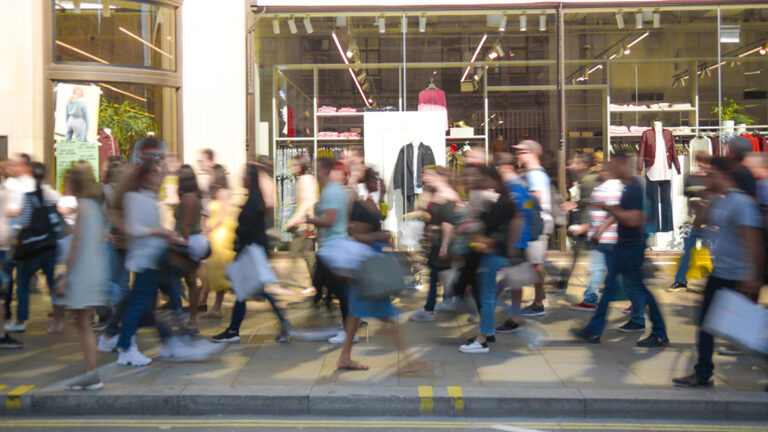Overcrowding, loud music, bright lights, in-store announcements and bright colours are the biggest sources of discomfort for shoppers – and can make customers leave stores quicker when shopping.
That’s the verdict from out-of-home media and infrastructure company, Clear Channel UK, which quizzed 2,000 people for a new study focusing on inclusive and accessible shopping experiences.
Those aged 45-54 are the most likely to leave a store because of overcrowding (68%), followed by 25-34-year-olds (64%). Customers aged 18-24 (31%) and 25-34 (30%) are more likely to leave a store because of bright lights than any other age groups, while shoppers aged 65 and older (50%) are more likely to leave a store because of loud music.
The study also revealed that neurodivergent (49%) people are more likely to leave a store because of loud music than neurotypical people (45%). Half of neurodivergent people (50%) would leave a store because of loud music, 37% because of bright lights and one in three (36%) because of in-store announcements.
According to the research, British customers think the following adjustments would make the stores more accessible and improve their shopping experience: turning down music (50%), limiting foot traffic (31%), priority queuing (25%), dimming lights (24%), quieter till scan sounds (18%), no overhead announcements (15%)
Other key finding from the survey:
- Only 48% of Brits are aware of sensory-friendly shopping hours
- Younger generations are more aware of sensory-friendly shopping hours than older generations – with 18-24 (59%) and 25-34 (53%) at the top of awareness funnel
- Gendered awareness of sensory-friendly hours: non-binary (83%), women (53%), men (51%)
- Only 38% of neurodivergent people are aware of sensory-friendly shopping hours
- Nine in 10 Gen Z-ers think stores need to prioritise sensory adjustments to make them more accessible
- Turning down loud music in stores is the preferred sensory adjustment for people aged 25 and over
- The most desired sensory adjustment for 18-24s is limiting foot traffic in stores (39%)


